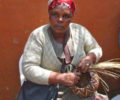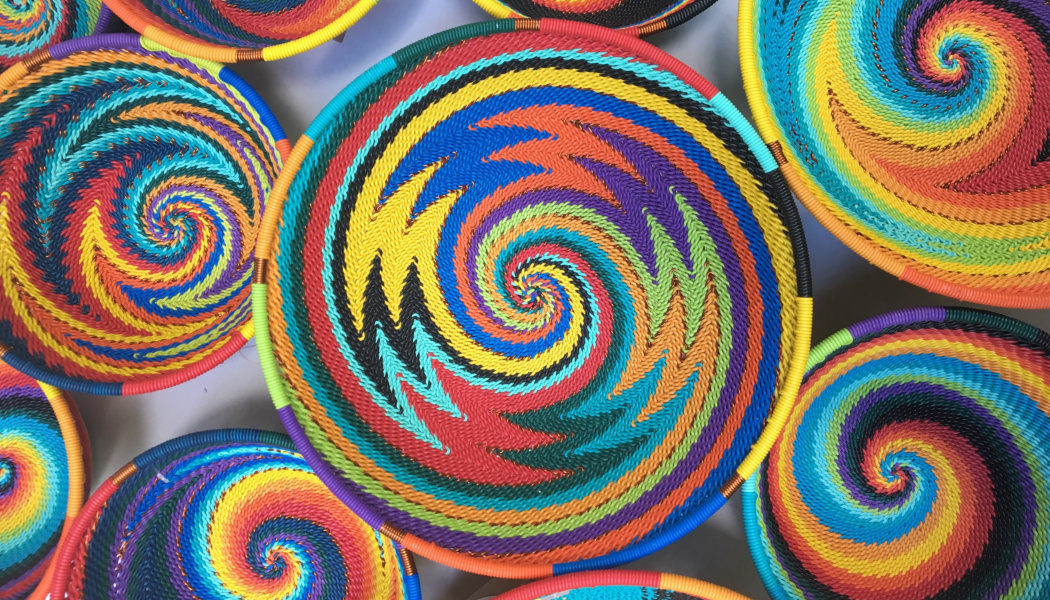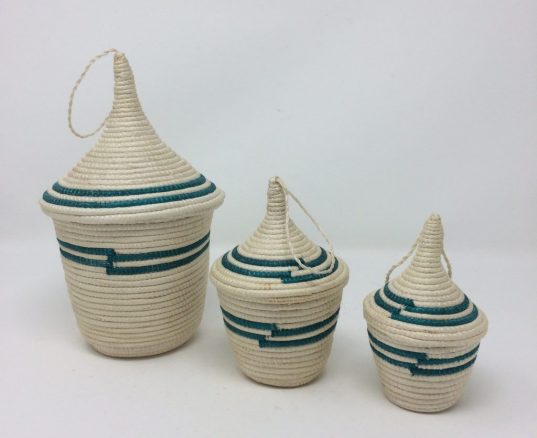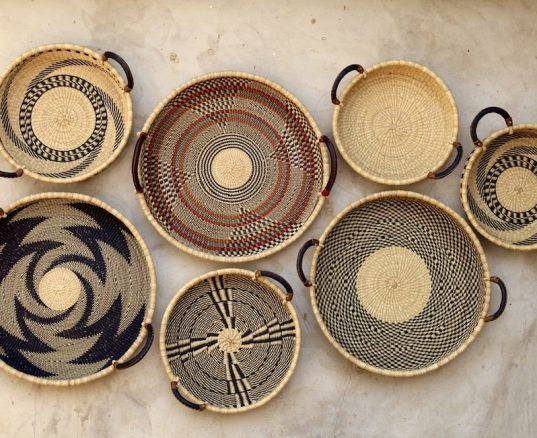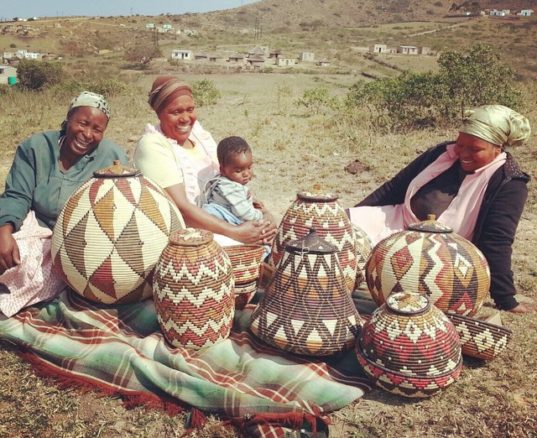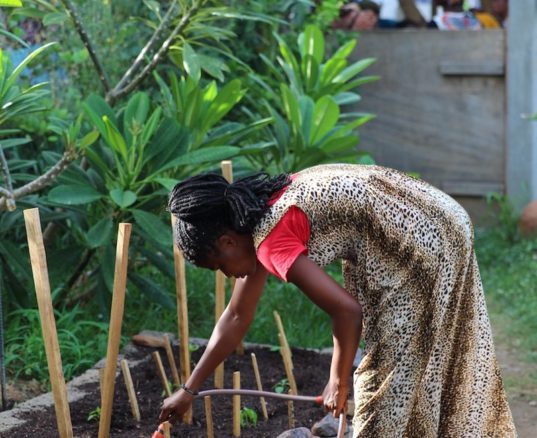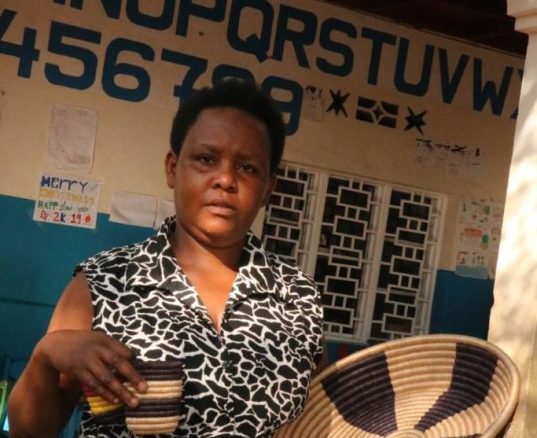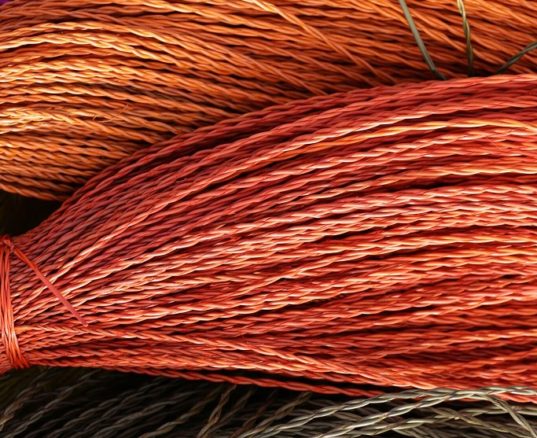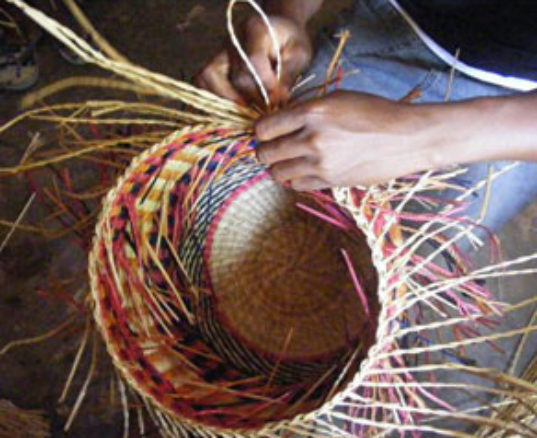The iconic African Telephone Wire Basket combines traditional skills with modern materials. Hand-woven from the rim down, using both bare and plastic-coated wires, the baskets with colourful swirling patterns are mainly produced by men, the highly skilled Zulu craftsmen.
Intricately woven, these urban versions of the grass and palm bowls originally made “back home” were started by Zulu men working in the mines, where they discovered off cuts of plastic covered telephone wire in a myriad of bright colours. To make extra money the workers began weaving the baskets from the scrap on their breaks.
The wires are ideally suited to weaving, being fine and flexible, and the bowls and baskets are worked with great precision into intricate and colourful patterns. Most baskets are woven from the bottom up whereas with wire weaving it is done from the top down. These inventive weavers start with a thick wire at the top rim of the basket and then work their way down, pulling each wire taut against a form to create the basket’s shape.
The wire used today is custom manufactured in special colours using some recycled and all lead-free materials. The wire is manufactured in South Africa. These unique baskets are especially functional and can be washed in warm, soapy water. The Zulu Telephone Wire work has gained international fame and has become very collectable.

